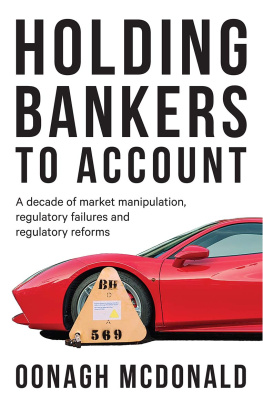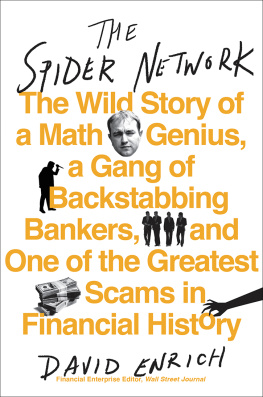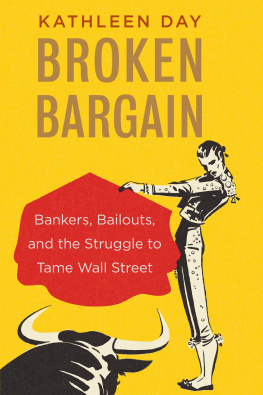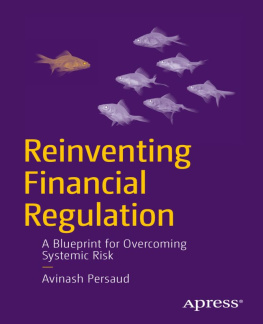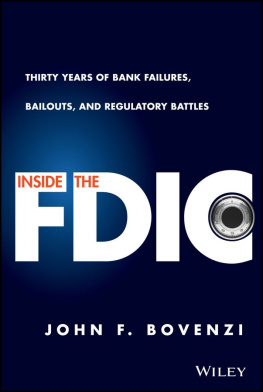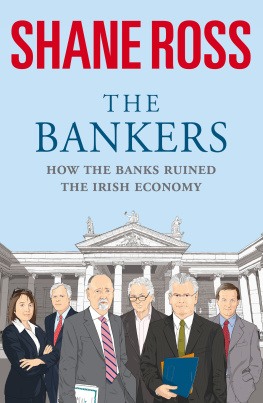Holding bankers to account

Holding bankers to account
A decade of market manipulation, regulatory failures and regulatory reforms
Oonagh McDonald
Manchester University Press
Copyright Oonagh McDonald 2019
The right of Oonagh McDonald to be identified as the author of this work has been asserted by her in accordance with the Copyright, Designs and Patents Act 1988.
Published by Manchester University Press
Altrincham Street, Manchester M1 7JA
www.manchesteruniversitypress.co.uk
British Library Cataloguing-in-Publication Data
A catalogue record for this book is available from the British Library
ISBN 978 1 5261 1943 8 hardback
First published 2019
The publisher has no responsibility for the persistence or accuracy of URLs for any external or third-party internet websites referred to in this book, and does not guarantee that any content on such websites is, or will remain, accurate or appropriate.
Typeset in Sabon by R. J. Footring Ltd, Derby, UK
Contents
The purpose of this book is first of all to provide a clear and documented account of the manipulation of LIBOR (the London Interbank Offered Rate), the foreign exchange (FX) market and the London Gold and Silver Fixes. Existing books and articles too often focus on the role of traders, especially Tom Hayes and his associates, which is understandable given his colourful role as ringmaster in a network of brokers and traders conspiring to rig LIBOR. My aim is to show that it was possible for such price fixing to take place over so many years only because the major banks operating in the UK, the USA, Germany, Japan and Switzerland had such weak systems and controls or, worse, no systems and controls at all. Potential conflicts of interest went unrecognised for years. Compliance officers were at best ineffective and at worst collusive.
In the first chapter, I trace the history of financial regulation in the UK. That has too often been dismissed as a period of deregulation, beginning in the 1980s. In fact, from the 1970s onwards, there was increasing regulation up until the mid-2000s, when the government began to espouse a light touch approach. A combination of factors meant that banks were ill-prepared to meet the financial crisis. In its aftermath, as the banks embarked on the slow path to recovery, making profits was essential. The traders seized that opportunity, and it may well be the case that banks were simply relieved that some areas of their business were profitable.
In of the book, I describe in detail what actually happened. The excerpts from traders emails and internet chatrooms show the ways in which traders from the leading banks colluded to fix the benchmarks so that they could make money out of derivatives contracts. I describe the methods used and the context in which such manipulation occurred. Once discovered, the banks faced huge fines from the regulators the costs to the banks are listed in full in the appendix.
, I set out the reforms which have taken place to ensure that the benchmarks are reliable indicators for the vast array of contracts which are based on them. The nature and scope of the reforms are not yet widely appreciated and their implications not yet fully understood. The argument of the book is that the final steps must now be taken. The banks must also reform themselves. These steps must include mandatory changes both in corporate governance and in the structure of systems and controls as set out in the UKs Senior Managers Regime. These should be applied to all major global banks. It is only when senior managers are individually responsible that the reforms outlined here will take full effect. The banks themselves should not regard these reforms as external impositions but internalise them, thus becoming well managed banks capable of restoring public trust.
The majority of sources cited are publicly available documents, some of which have been recently released into the National Archives under the 30-year rule. These documents include internal memos and notes referring to the Financial Services Act 1986 from the Department of Trade and Industry and the Treasury, speeches by government ministers (including the Prime Minister of the day), evidence submitted by the Bank of England to the Committee to Review the Functioning of Financial Institutions (the Wilson committee) and the Gower report. All other documents, including final notices, orders, dockets, enforcement notices, consultations, responses to consultations, rules, regulations and guidance are available on the websites of the Financial Conduct Authority, the Prudential Regulatory Authority, the US Commodity Futures Trading Commission, the New York Department of Financial Services, the US Department of Justice, the European Commission, the Bank of England (including its archives), the UK Parliament for the House of Commons Treasury Select Committee, the board of governors of the US Federal Reserve, IBA Benchmark, the Financial Stability Board, the London Bullion Market Association and others. These are detailed in the notes to each chapter. Unfortunately, all the documents produced by the British Bankers Association (BBA) covering the period from 1987 onwards are also covered by the 30-year rule, which the BBA had imposed and, as it was a private organisation (which was merged into UK Finance in 2017), these are not available under the Freedom of Information Act. I did request access to documents from 1986, but these had been placed in a 1987 folder by the London Metropolitan Library, which holds the BBA papers, and I was thus denied access both by the Library and by the then chief executive of the BBA.
All that remains is for me to thank those who gave freely of their time for the background and private information they provided. They wish to remain anonymous.
Algorithm An algorithm is a set of rules or procedures to be followed by a computer. Algorithmic trading involves the construction of a model to initiate a trade based on certain key inputs, such as momentum, correlations within or across markets and systemic responses to key economic data or news. Once a trade decision has been made, the algorithm carries out the trade.
BBA British Bankers Association.
BIS Bank for International Settlements.
Brady bonds So-called after US Treasury Secretary Nicholas Brady, who helped international monetary organisations institute a programme of debt reduction by converting defaulting loans into US bonds with zero-coupon Treasury bonds as collateral.
CDS Credit default swap.
CEA Commodities and Exchange Act (US).
Certificate of deposit A certificate issued by a bank to an individual depositing money for a specific length of time at a specific rate of interest.
CFTC Commodity Futures Trading Commission. An independent agency of the US government which regulates the futures and options markets.
Commercial paper An unsecured form of promissory note which pays a fixed rate of interest.
EBF European Banking Federation.
EBS Electronic Broking Services.
ECB European Central Bank.
Eurobond An international bond that is denominated in a currency other than that of the country or market in which it is issued.
Eurodollar A US dollar deposit, typically a 3090-day or 180-day deposit, which is placed with a bank outside the United States. Neither the nationality of the bank nor the location of the supplier of funds is relevant, only the location of the bank accepting deposits.

